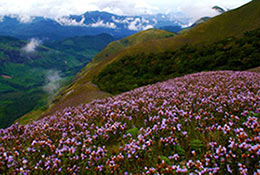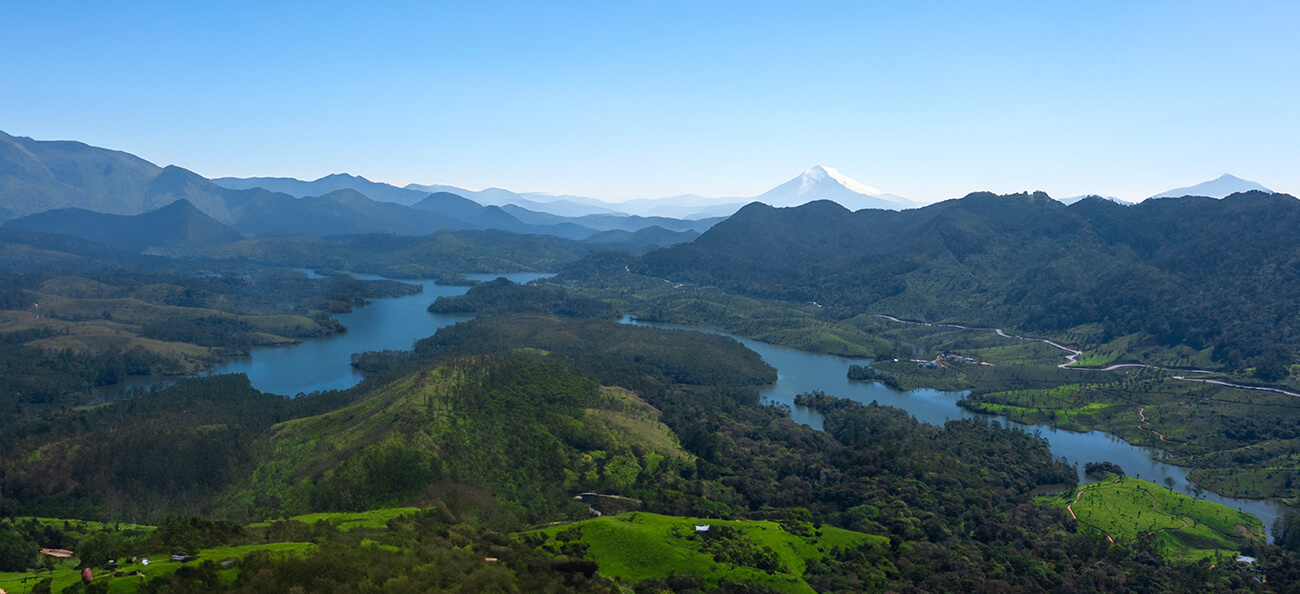
Munnar is a destination sprawling of tea and cardamom estates, interspersed with luxuriant forests. Tropical plantations of tea, coffee and cardamom, dense forests & wildlife sanctuaries all teeming with flora and fauna, portray the rich bio-diversity of the region. Of particular interest among the wildlife that abound in Munnar are the Nilgiri Tahrs (Mountain Goats), Langurs and Elephants. Munnar is also famous for the exotic flower – ‘Neelakurinji’, which blooms every 12 years and covers the mountains of Munnar with a glorious carpet of purple.
Munnar was once the summer capital of the British administration in South India. In summer entire families and their staff moved to Munnar. Due to the cool climate they named Munnar 'little England'. Even though documented historical information exists from the 10th century, prehistoric relics found in the area indicate the existence of a Stone Age civilization. In the early 19th century the chieftain of the villages in the Anchanad area named Kannan Thevar held lands to the north of the high ranges in the territory under the rule of the Raja of Poonjar. JD Munro a British lawyer and tea planter leased close to 600sq km of jungle around Munnar from the Poonjar king. It is believed that the first tea sapling was planted by A.H.Sharp in what is today part of Sevenmullay Estate. He then cleared the forests for tea plantations. This land was then known as Kannan Thevar Concession Land till 1895 when Finlay Muir and Company bought Munro's land. Today many remanents of the colonial period can still be seen in Munnar town and in the surrounding tea plantations.





















